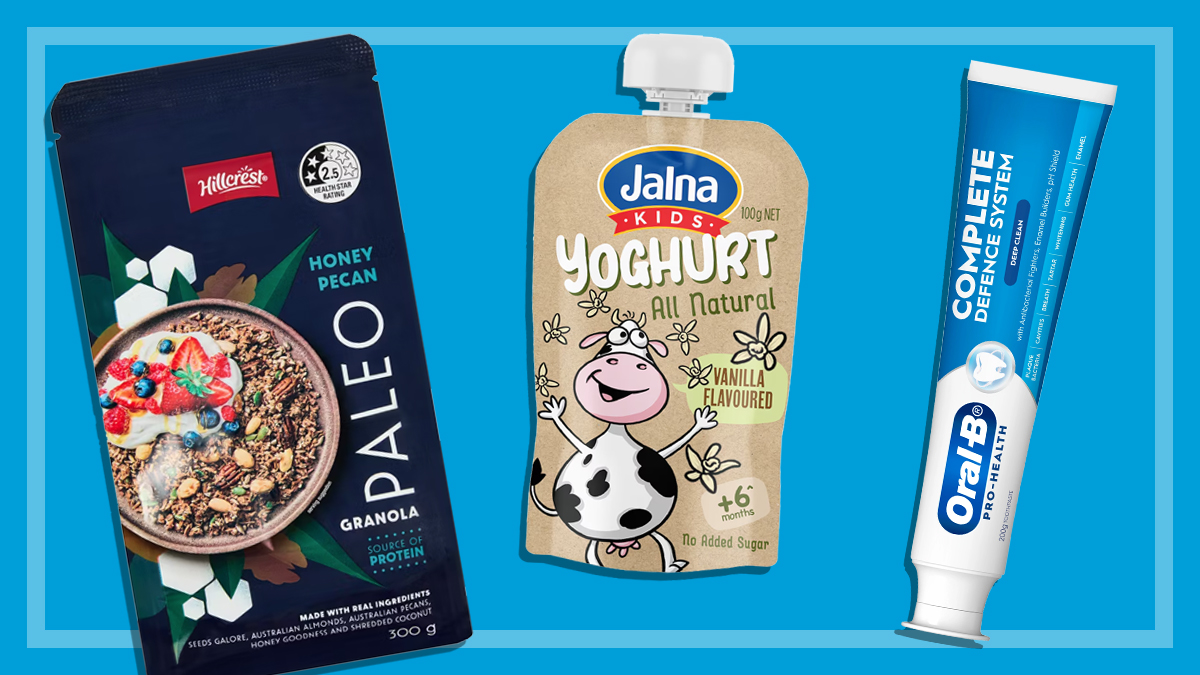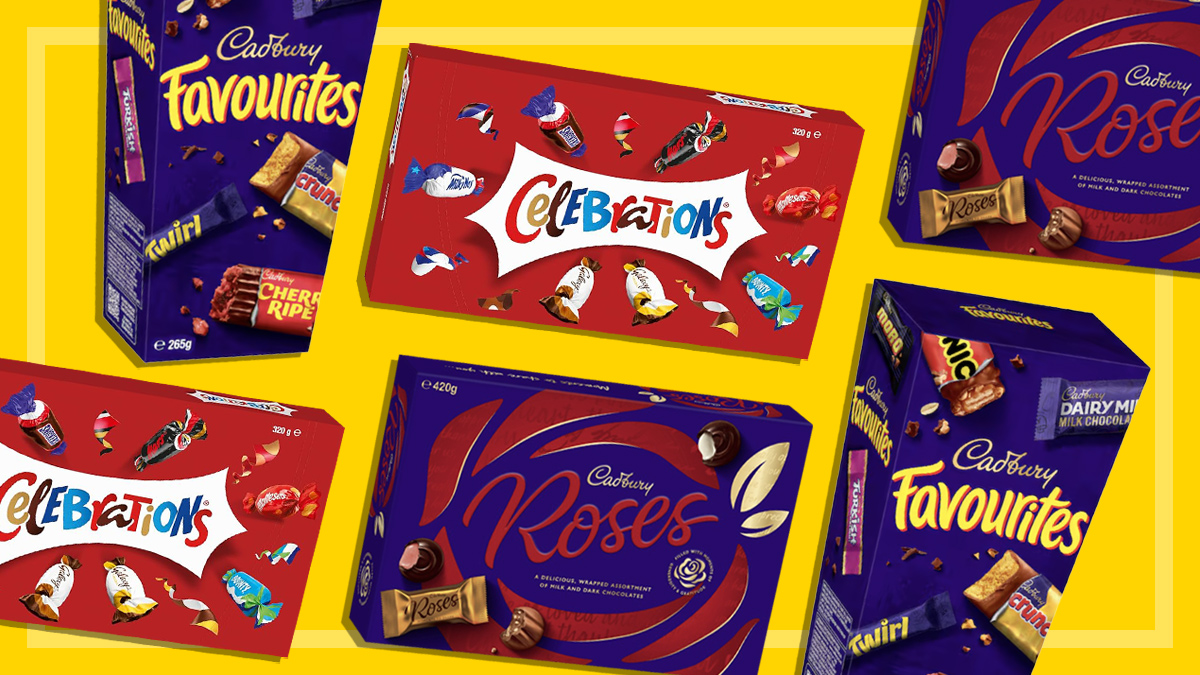Get our independent lab tests, expert reviews and honest advice.
Strengthening Health Star Ratings

Need to know
- Health Star Ratings can help us make healthier food choices, but manufacturers are picking and choosing when and where to display them
- When Health Star Ratings are absent, people are influenced by brand perception, marketing claims and images
- Strengthened, mandatory Health Star Ratings will mean the system will work better for consumers
On this page:
New research from CHOICE highlights the value of Health Star Ratings (HSRs) in helping people see beyond persuasive – and sometimes misleading – marketing to find healthier options among similar food products. The results add weight to calls to make Health Stars mandatory.
With such a dizzying array of foods on supermarket shelves, it can be overwhelming trying to choose those that are better for us – even among what appear to be relatively healthy products.
Add to this time pressures; an overload of labelling detail including ingredients lists, nutrition information panels and nutrition claims; or shopping with small children – and it’s clear that having a system that provides a simple, meaningful health rating is essential.
HSRs were developed to help consumers make informed food purchases and healthier eating choices at a glance. And the results of our recent survey further demonstrate how they help – and why the system needs to be strengthened.
Read on for four things we learned from our survey, or jump to our verdict on what needs to change about Health Star Ratings.
1. When Health Star Ratings aren’t present, consumers are far less likely to accurately identify less healthy products
We showed survey participants a range of different food products and asked them to rate the products as ‘very healthy’ to ‘not at all healthy’ based on the images and information that appear on the pack, but we only revealed the products’ HSRs to half the participants.
Carman’s Oat Slice Cranberry & Blueberry

Without seeing the HSR, almost three out of four (74%) people said this Carman’s Oat Slice Cranberry & Blueberry is healthy, compared with 41% when its rating of 1.5 was provided.
On pack claims:
- Real food made with real passion
- Real fruit
- Source of whole grain
- Source of fibre
- No artificial colours or flavours
- Baked
Table of Plenty Mini Rice Cakes Milk Chocolate

Without seeing the HSR, 43% of people considered Table of Plenty Mini Rice Cakes Milk Chocolate to be healthy, compared with just 19% when its rating of 1 was provided.
On pack claims:
- 69 calories per pack
- Gluten free
- Nothing artificial
- No Palm Oi
2. Health Star Ratings help people determine the healthiness of a product.
Without HSRs, people disproportionately rely on marketing claims.
We asked participants how easy or difficult they found it to rate the healthiness of the products.
- Of those who found it easy, the HSR was cited by 65% as being the reason.
- Of those who saw the HSRs, around half (52%) also took into consideration the marketing on pack, including product descriptions and images, to assess a product’s healthiness. When HSRs weren’t shown, this number rose to 75%.
3. People struggle to compare like products effectively when some have Health Star Ratings and others don’t.
People were asked to select the healthiest option from a selection of like products across different categories, with some products within each category displaying HSRs and others not.
Brand perception
When products didn’t display HSRs, people disproportionately relied on brand perception in order to make a decision about the healthiness of a product.
Weight Watchers Macadamia & Cranberry has an HSR of 2, which isn’t displayed on pack. Still, around half (49%) chose it as as the healthiest option from a selection of four snack bars (including a product with an on-pack HSR of 5), based on their perception of the brand.

The role of images
Without the guidance of an HSR, consumers also relied upon their understanding of the ingredients and pictures on the pack.
For example, when asked to select the healthiest option from a range of coconut flavoured yoghurt products all without HSRs on pack, three out of five respondents (63%) weren’t able to.

Linda Przhedetsky, CHOICE policy and campaigns adviser, says, “Manufacturers are picking and choosing when and where to display Health Stars. This approach is confusing, and leaves too many sugar-laden, unhealthy options on our shelves without appropriate labelling.”
“Ministers have to stop manufacturers from gaming the system by making them display the star rating on all of their products,” she adds.
4. People are using the Health Star Rating system
Finally, we asked survey participants about their trust in and use of the HSR system. Overall we found that it’s well-known and utilised. It plays an important role in influencing people’s food choices, and encourages them to make healthier choices. Our survey results showed that:
- Three quarters (75%) of those that have used HSRs trust the system quite a lot or a great deal.
- More than three out of every five (62%) respondents have used HSRs to influence their choice of food.
- One in four (25%) have chosen a product with a HSR displayed on pack versus those that don’t have a HSR on pack.
CHOICE verdict: Improvements needed, and system should be mandatory
Clearly, the HSR system isn’t perfect. There are a number of anomalies which allow certain products to receive higher ratings than they deserve. And importantly, the system is only voluntary, meaning that manufacturers aren’t required to use it. But there are ways it can be improved to make it work better for consumers.
Earlier this year, the government provided a draft report on recommended updates as part of a five-year review of the HSR system. We support many of these recommendations, but we don’t think they go far enough. In particular:
- The report recommends a package of changes be made to the way the HSR is calculated to better align with Australian Dietary Guidelines. This includes stronger penalties for total sugars, but we want the algorithm to incorporate a penalty for added sugar in food and drinks.
- The report recommends an uptake target – that HSRs must be displayed on 70% of target products by end 2023 – but our preference is that the system be mandatory.
We’re now calling on ministers to improve upon the review’s recommendations, to help make the HSR system work better for consumers.
How we surveyed
In October 2019, CHOICE conducted research to understand the impact of Health Star Ratings. The research was completed by 1001 Australians, representative by age, state and gender via an online survey. The respondents and fieldwork was managed by independent, accredited market research supplier, Dynata.





